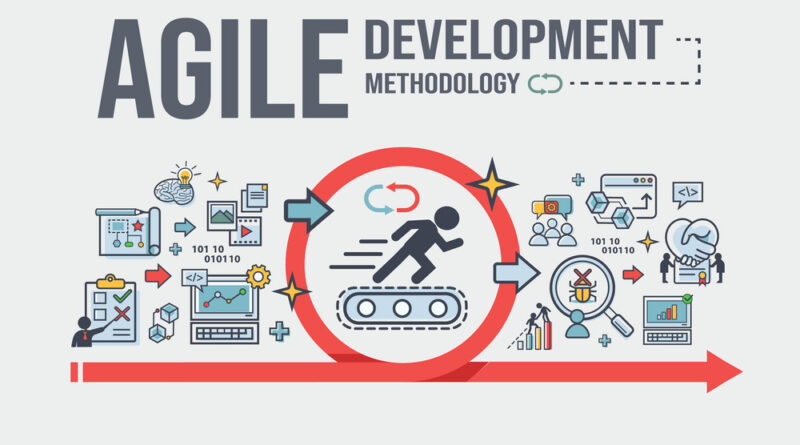Agile Development Methodology- Benefits and Challenges to Consider
The basic concept of the dual-track agile approach is to provide working versions of the software in various iterations. The next step is to update the software based on customers’ responses and comments.
Dual-Track Agile also follows the same concept. The cross-functional team divides its day-to-day development activities into two tracks:
- Discovery: It emphasizes rapidly emerging verified software product ideas for the backlog.
- Delivery: It emphasizes implementing ideas into the software which are ready to release in the market.
It empowers rapid development. Users will get the exact they have expected.
Here, we have mentioned multiple benefits and challenges of Agile Development Methodology. Have a look.
Benefits of Agile Development Methodology
1. Improved Product Quality
Quality assurance plays an important role in agile project execution. Each release gets thoroughly tested to ensure highly maintained software quality.
The clients get involved throughout the product development process dual track agile. They ask for modifications according to market scenarios. As agile follows an iterative approach, development teams continue to learn and improve.
2. Superior Customer Satisfaction
A customer always stays engaged in a decision-making process that drives improved customer retention. In the old-school framework, customers get involved only in the planning phase and don’t affect execution. It influences customization and adaptability.
It ensures that the end product is the same as their expectations.
It enables product owners to effectively invest in the opportunity and leverage the first-mover’s advantage.
3. Enhanced Control
Managers can leverage
- Enhanced transparency
- Real-time integration of customer feedback
- Features of quality control with Agile development
The software quality gets ensured with daily progress reports generated by the advanced reporting tools. It is possible to engage all the stakeholders in the implementation phase of the product.
4. Better Project Predictions
It is easy to anticipate risk and uncover its solutions as Agile approaches offer more visibility. The dual-track agile framework provides many ways to determine and predict risks.
The scrum method uses sprint backlog and burndown charts to boost project visibility.
5. More Flexibility
Agile Methodology fosters unmatched flexibility. Development teams receive constant feedback and high engagement from the product owner. Usually, changes in project management methods take too much time and are expensive.
Agile split the project into smaller sprints that are manageable and flexible. This unparalleled adaptability is one of the reasons enterprises leverage agile in their project development.
6. Continuous Progress
Agile methodology has an iterative approach. It means each sprint will be an improved version of the previous one. Mistakes will never repeat.
7. Highly-Relevant Metrics
Agile development teams use metrics for time & cost estimation and measuring project performance.
Agile methodology focuses on delivering outcomes and optimizing performances. It provides essential metrics such as lead time, cycle time, and throughput. It aids in measuring the team’s performance, recognizing bottlenecks, and making data-driven decisions to fix them.
Challenges Associated with Agile Development Methodology
Some of the disadvantages of agile development are as follows.
- Agile does not suit the processes where it is necessary to make tough decisions like,
- Construction planning
- Manufacturing planning
- Military planning
- Health care system and much more like this
- There is no perfect plan at the beginning of the project.
- There are three primary causes why the Agile development methodology disappoints.
- Absence of enough experience with Agile methods – Agile looks like an ordinary method. It is what project management practitioners do not acknowledge.
- No understanding of essential organizational changes – Thorough acceptance of agile development methodology needs a complete transformation. Some of the managers are not clear with this understanding.
- Organizational culture contradicts the Agile principles – Any company culture in contradiction with the agile approach does not suit agile projects. If we focus on company culture, Agile succeeds better in a low management controlling situation over a high one.
From a practitioner’s point of view, there are five challenges of agile methodology.
- Lower predictability – Developers can not measure the maximum extent of needed efforts for some software outputs. It happens with large-sized products at the beginning of the development life cycle. Ultimately it drives frustration.
- Need more time and high dedication -Quality analysts, clients, and developers need to communicate regarding the ongoing processes. It adds many face-to-face discussions and close engagement with each other. Customer feedback is necessary for every phase for on-time testing and to proceed ahead. It is time-consuming and difficult. So it needs more time and energy.
- Customer engagement – Agile includes close collaboration and comprehensive users engagement. It needs high dedication to assure project success. Customers must be able to help in product development phases. A single absence of customer engagement will influence the software quality.
- Documentation – As the basics of software get explained right on time for development, there is less inclusive documentation. It means they do not identify certain features or how to conduct the joining of new employees in the team. It creates misconceptions and troubles.
- The project gets misguided – The Agile approach needs very minimal planning at the beginning of the project. It assumes that the customers’ demands keep changing continuously. If there is no feedback from the customer, a development team focuses on the wrong development areas.
To sum it all up,
Agile development and testing practices have done miracles for plenty of organizations. Positive features of agile are not secret. They are pretty clear in extent like,
- Reduced time to market
- Enhanced communication
- Decreased costs
The origin of Agile being repugnant has begun from the individuals who have experienced failure in processes. The offensive fields get defined by,
- Disordered processes
- Poor quality
- Misperception and various other issues
For success with Agile development methodology, it is imperative to
- Adopt uncertainty
- Value interactions
- Focus on providing a working product in each phase of the product development journey




